Can I use it in the kitchen?
Before figuring out whether liquid wallpaper is suitable for the kitchen, you need to understand what kind of material it is.
Liquid wallpaper or silk plaster, unlike ordinary wallpaper, is sold not in rolls, but in bags. A dry mixture of colored cellulose and decorative additives is diluted with water, and then applied with a spatula - like plaster. The original coating looks like a soft porous stone, and if you come closer - felted felt.
You can use liquid wallpaper for walls, but due to the fear of water, you should not apply them to the apron in the cooking area and sink. It is better to decorate the walls with liquid wallpaper further from fire, high temperatures and water: in the area of the dining table, pantry.
Advice! If your kitchen is small (4-6 sq. M.), You should not use liquid wallpaper: in a compact room there is a high risk of kitchen stains on all walls, not only near the countertop. And it will be almost impossible to wash them.
Pros and cons of using in the kitchen
Consider all the advantages and disadvantages of the coating:
| pros | Minuses |
|---|---|
|
|
In the photo, an example of a texture close
What material is better to choose from?
Liquid wallpaper, despite its variety, there are only 4 types:
- From cellulose. The cheapest and least durable possible.
- Silk. Silk fiber looks and costs more, lasts longer, is not afraid of ultraviolet radiation. The most expensive ones.
- Cotton. They will cost less than silk, have a small unusual texture, reminiscent of paper.
- Made from a mixture of silk and cellulose. The middle version, combining affordable price and high quality: the more silk in the composition, the more durable the surface will be.
An important role in the selection is played not only by the material, but also by the manufacturer.
- France (Senideco, Cotex, RMD). They are considered pioneers in the market. They are distinguished by high quality and no less high price, as well as a varied palette.
- Turkey (Silkcoat, Bayramyx). An excellent alternative to French liquid wallpaper: beautiful, high quality, but less expensive.
- Russia (Stenol, Danish plaster, Silk Plaster). It is profitable to purchase such, but the palette of shades is much narrower than that of Turkish or French counterparts - often the dye goes separately.
Many manufacturers make not only dry mixes, but also offer special protective diluted varnishes: they will help protect the cellulose from moisture and contamination! The walls or ceiling of the kitchen with dried material is covered with a thin layer of transparent varnish - voila, the surface can be wiped with a damp cloth or even washed! In this case, nothing prevents you from using the material, even in a small kitchen area.
Important! Acrylic lacquer coating will negate the texture of the wallpaper and its "breathable" properties, so before you start, decide which is more important.
To be sure to be satisfied with your purchase, follow the advice of experts:
- Contact trusted stores that probably do not ignore the rules for storing goods. Failure to follow the rules can ruin the material.
- Give preference to well-known brands - manufacturers value their reputation and will not use low-quality raw materials.
- Take a close look at the appearance of the mixture. It should be homogeneous, practically odorless.
- Don't go for a low price. High-quality options will serve you ~ 10 years, and cheap ones will deteriorate in two or three. Remember, the miser pays twice.
What can be finished with liquid wallpaper?
Liquid wallpaper is suitable for finishing not only vertical, but also horizontal surfaces: for example, the ceiling. But the main field, of course, remains the walls. In order for the finish to last as long as possible, the surface must be prepared:
- Remove old coating. Carefully remove old wallpaper, paint or tiles.
- Patch up big holes. Liquid wallpaper conceals minor imperfections, but it is better to get rid of large depressions and cracks using more traditional methods: plaster and putty.
- Protect metal from rust. If you can see fittings or other metal elements in the wall, cover them with varnish or paint - if the metal starts to rust from moisture, red spots will appear on the wallpaper.
- Prepare the walls. Before any finishing work, the walls are covered with a primer, liquid wallpaper is no exception. Choose a composition with waterproofing properties so that the surface does not get damp during use.
Important! Do not start mixing the composition until you have read the instructions for use: preparing the mixture is one of the most important stages, it will depend on how the wallpaper is applied and what the result of all the work will be. To avoid lumps, water should be added to the dry mix, not vice versa.
Due to its elasticity, liquid wallpaper for the kitchen is used not only over the entire surface, but also as a special decoration. With the help of a template bought or made by yourself, you can create a beautiful design pattern without even having a talent for art. Professionals can create complex 3D images by adjusting how thick to apply.
In the photo, drawing using cellulose
How to care?
We have already mentioned two main aspects that you need to know for gentle care:
- Antistatic agent. There is practically no dust accumulation on the surface.
- Hydrophobicity. Liquid wallpaper is destroyed by the action of water (of course, if not covered with varnish).
Based on this, we can conclude: the only suitable option is dry cleaning. Use a soft-brush vacuum cleaner - sweep the walls once every couple of months while cleaning to remove any dirt.
Liquid wallpaper has one more advantage: it can be restored if necessary! If a food stain remains on the surface, or if you accidentally hook and tear off a small piece of wallpaper, it will not be difficult to make a patch. To do this, first of all, the material with the stain is removed, then the place around the damaged area must be thoroughly moistened and "loosened" a little. The last step is to smooth out the bald spot: just as you did during the application.
The photo shows blue shiny walls
Design ideas in the interior of the kitchen
The main difference between all types of liquid wallpaper is texture and color. In large, spacious kitchens, coarse-grained materials are used, in small ones, finely dispersed, almost smooth materials.
It is preferable to cover the walls in small northern kitchens with light warm shades (beige, yellow, peach, crème brulee). Cold ones (blue, green, gray) are suitable for decorating southern rooms: both large and small. White liquid wallpaper with shine will make the tiny kitchenette more spacious.
If you plan to make a drawing, its dimensions should also be commensurate with the space: large paintings, maxi-format are used in a large kitchen. For a small one, it is better to choose not too large abstract repeating patterns.
In the photo there are gray walls in the kitchen
Photo gallery
Liquid wallpaper is a modern stylish option for decorating walls in an apartment. But before you start repairing them in your kitchen, weigh the pros and cons.

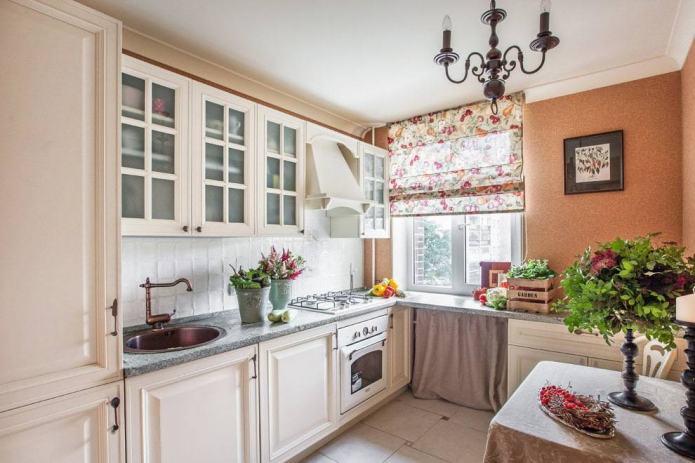
 10 practical tips for arranging a small kitchen in the country
10 practical tips for arranging a small kitchen in the country
 12 simple ideas for a small garden that will make it visually spacious
12 simple ideas for a small garden that will make it visually spacious

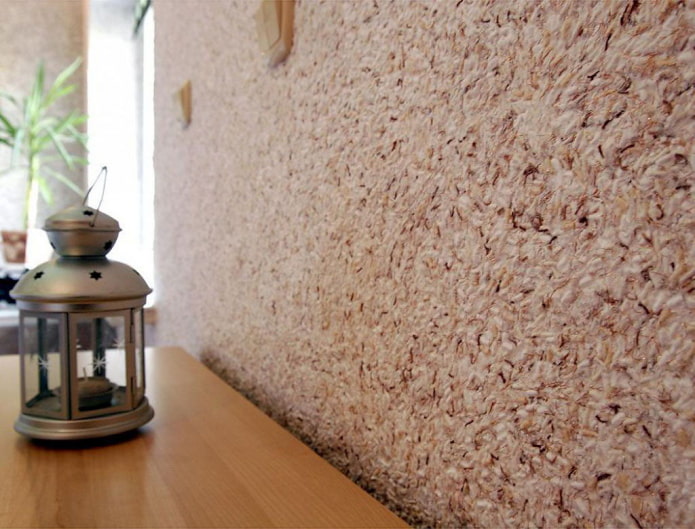
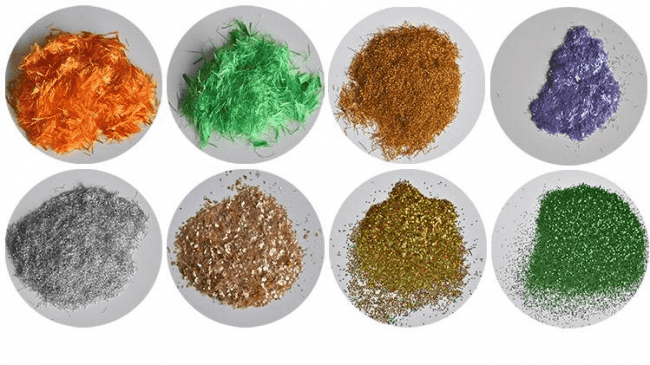
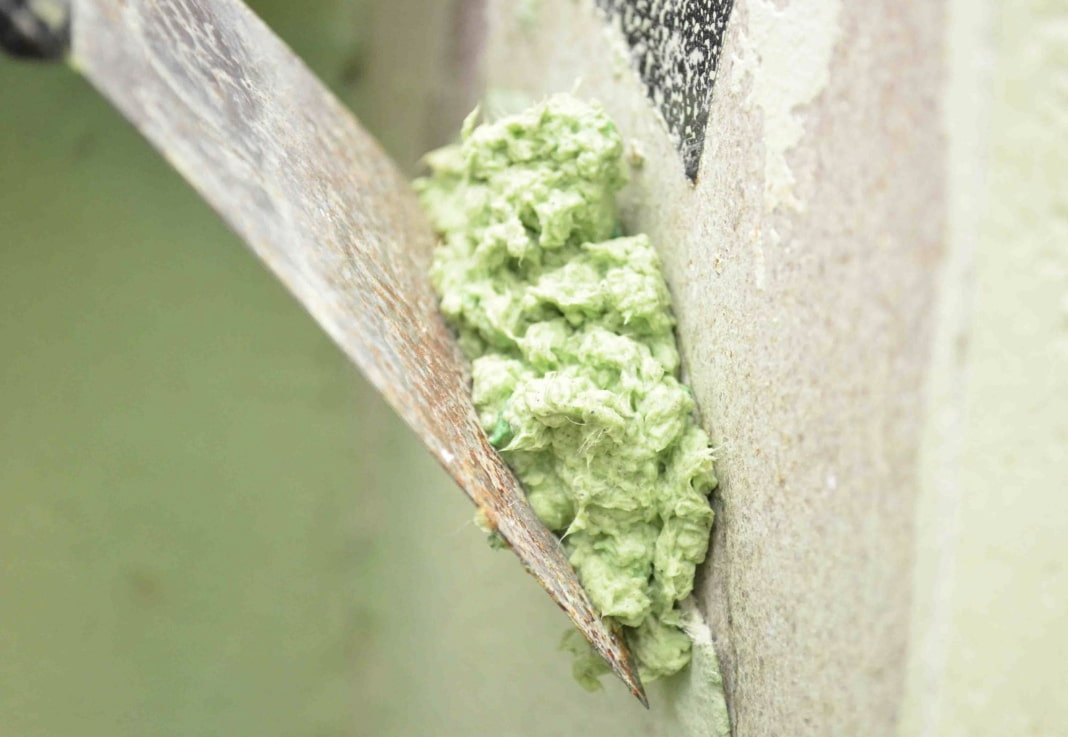
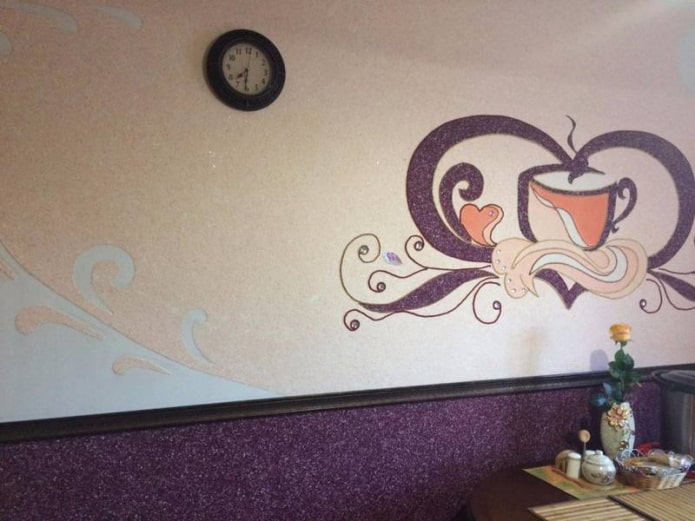
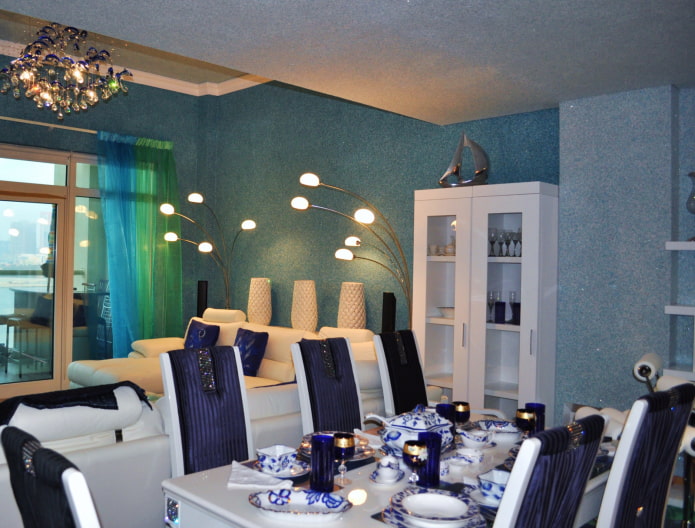
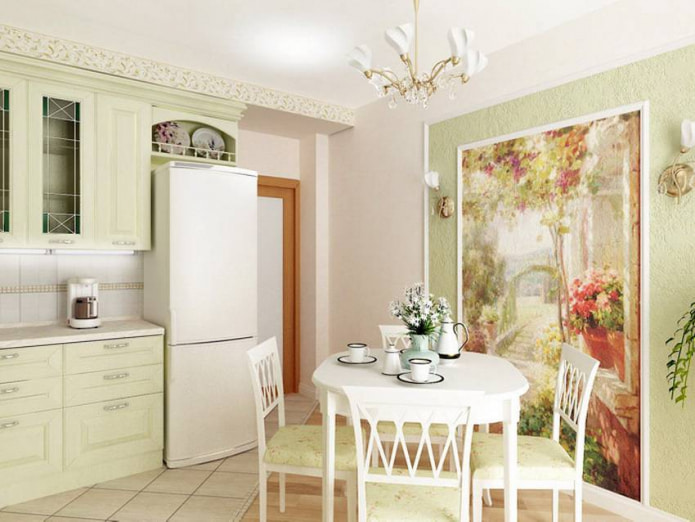
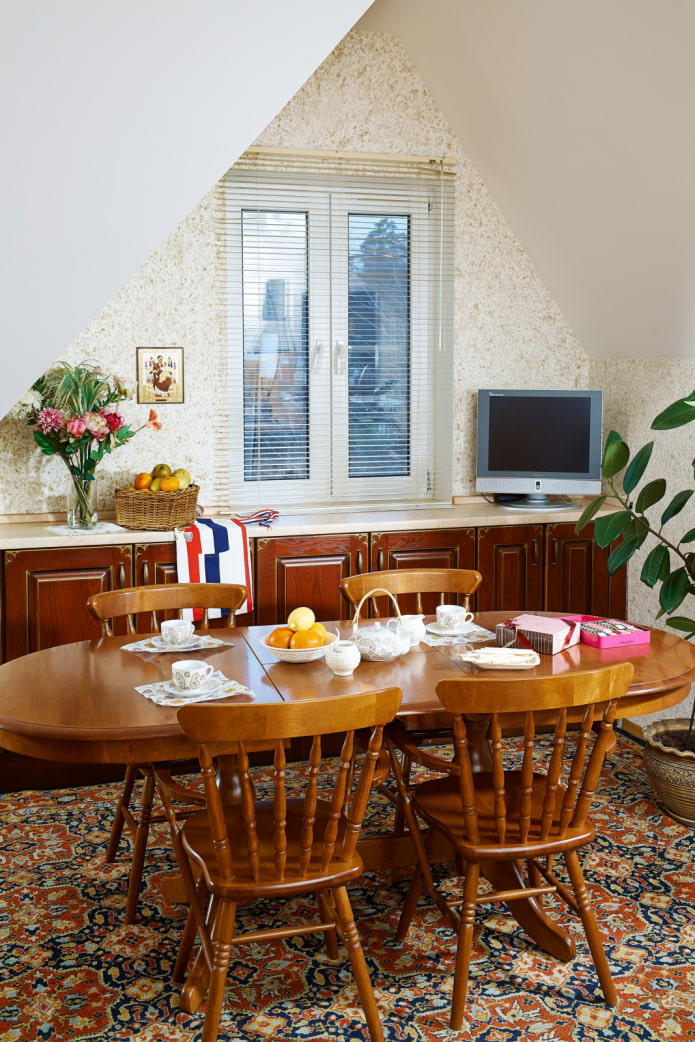
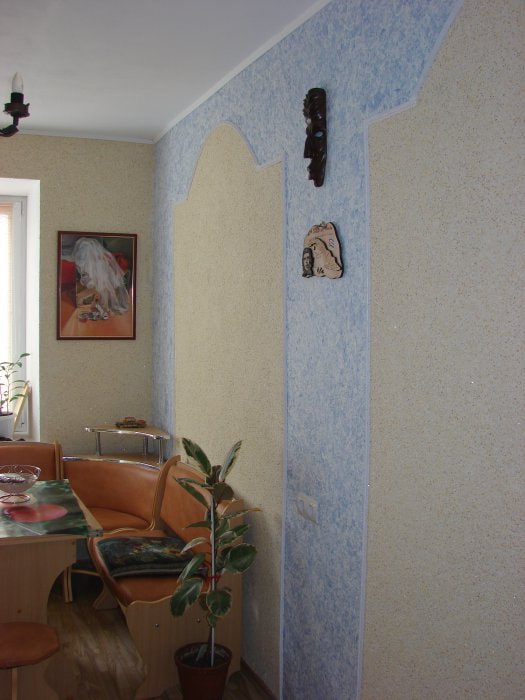
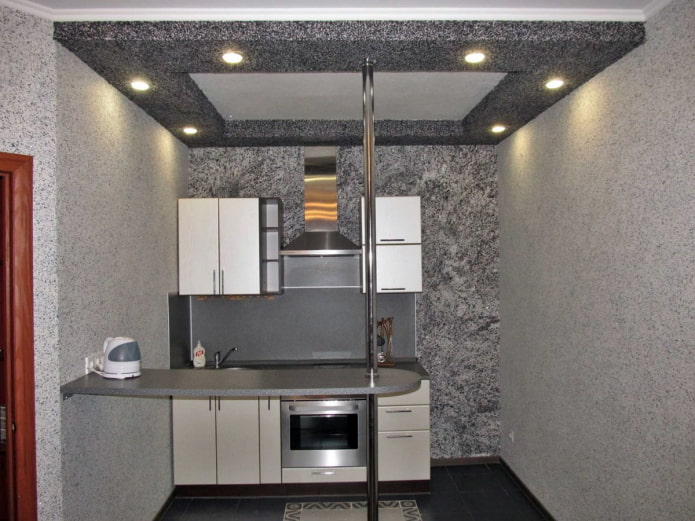
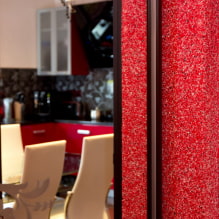
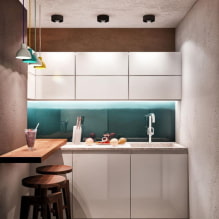
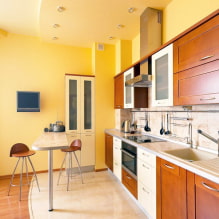

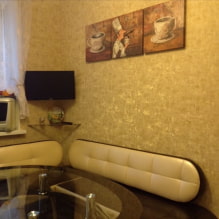
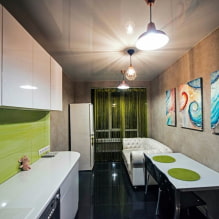
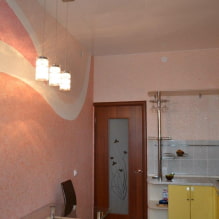
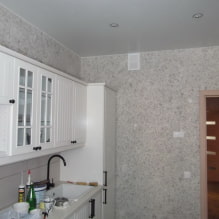
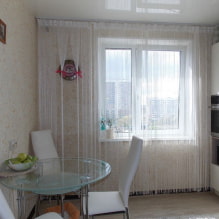
 How to choose the color of your kitchen sink?
How to choose the color of your kitchen sink? White kitchen set: features of choice, combination, 70 photos in the interior
White kitchen set: features of choice, combination, 70 photos in the interior Black set in the interior in the kitchen: design, choice of wallpaper, 90 photos
Black set in the interior in the kitchen: design, choice of wallpaper, 90 photos How to choose curtains for the kitchen and not regret it? - we understand all the nuances
How to choose curtains for the kitchen and not regret it? - we understand all the nuances Design of a white kitchen with a black countertop: 80 best ideas, photos in the interior
Design of a white kitchen with a black countertop: 80 best ideas, photos in the interior Kitchen design with green wallpaper: 55 modern photos in the interior
Kitchen design with green wallpaper: 55 modern photos in the interior